AAC Assessment Corner with Vicki Clarke: AAC Skills Assessment for Direct Selectors
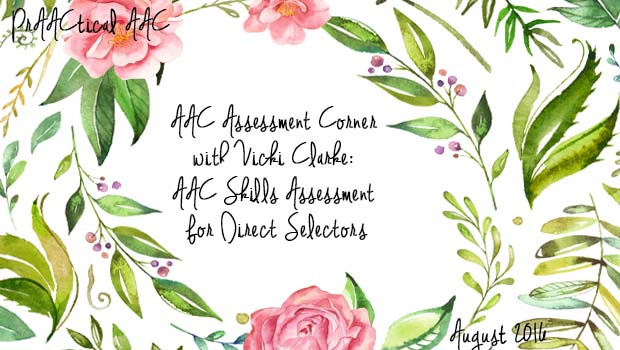
The month of August is almost over and we’ve saved the best for last. The month wouldn’t seem complete without hearing more of Vicki Clarke’s ideas on AAC assessment. In addition to many other things, Vicki’s practice, Dynamic Therapy Associates, does 50+ of these evaluations each year, both in the clinic and in school settings. In this post, Vicki shares some thoughts on assessing the AAC skills of people who use direct selection. As always, she packs in a lot of information and generously provides the protocol and data collection forms that she uses. You can explore some of her previous posts in the AAC Assessment Corner series here. 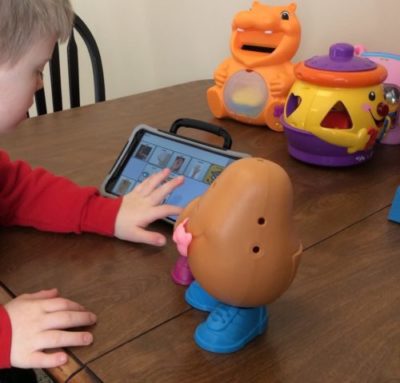 *
*
:::::::::::::::::::::::::::::::::::::::::::::::::::::::::::::::::::::::::::::::::::::::::::::::::::
AAC Skills Assessment for Direct Selectors
I spent the morning with a great group of students at the University of Georgia (UGA) in Dr. Satterfield’s AAC class. I was asked to talk with them about AAC assessment with an emphasis on procedures and starting points. Last week I also had the opportunity to speak at the US Autism and Asperger’s Association World Conference in Kentucky. I was able to spend time with families and speech language pathologists, many of whom asked the same question as the students at UGA, “Where do I start???”
and starting points. Last week I also had the opportunity to speak at the US Autism and Asperger’s Association World Conference in Kentucky. I was able to spend time with families and speech language pathologists, many of whom asked the same question as the students at UGA, “Where do I start???”
Just like driving a car, when you’ve been doing AAC assessments for a long time, you almost don’t have to think about the details of what you are doing. I automatically pull out the devices and apps, YouTube, iPad, snack, bubbles and wind-ups, and start playing. Unfortunately, it is less than helpful to tell people new to AAC to just play with students and watch what they do. In an effort to describe our process, I created a data sheet to break down the steps, and typed up the procedures and suggested apps. These documents are meant to be a supplement to the Dynamic AAC Evaluation Protocol. I’ve realized for a long time that the Hands On Trial portion of the protocol needed beefing up, so here you go!
 The AAC Skills Assessment Protocol describes possible activities to evaluate even very early skills in AAC using your iPad and some carefully selected apps or a dedicated speech generating device. Many of the skills on the data sheet are similar to the ones you see on the AAC Evaluation Genie app and the Test of Aided Symbol Performance (TASP). I find these tools extremely helpful but because they have to be generic across all patients and required verbal instruction students at times are less than motivated to participate or struggle with following the auditory prompts. We know that many of our potential AAC students need to be personally motivated to interact with us, so the AAC Skills Assessment Protocol offers multiple suggestions for apps and activities to allow evaluators to select interesting activities for individual students.
The AAC Skills Assessment Protocol describes possible activities to evaluate even very early skills in AAC using your iPad and some carefully selected apps or a dedicated speech generating device. Many of the skills on the data sheet are similar to the ones you see on the AAC Evaluation Genie app and the Test of Aided Symbol Performance (TASP). I find these tools extremely helpful but because they have to be generic across all patients and required verbal instruction students at times are less than motivated to participate or struggle with following the auditory prompts. We know that many of our potential AAC students need to be personally motivated to interact with us, so the AAC Skills Assessment Protocol offers multiple suggestions for apps and activities to allow evaluators to select interesting activities for individual students.
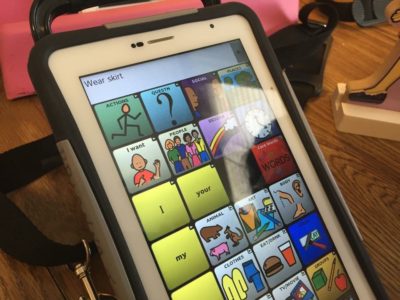
Please note, this protocol requires you have an iPad and a few appropriate apps. Many of the apps are inexpensive and can be used subsequently for therapy. It is not necessary to purchase all the apps on the lists, these are just suggestions of ones we use at DTA. Please leave comments sharing other apps or activities you’ve found to be helpful for evaluating specific AAC techniques!
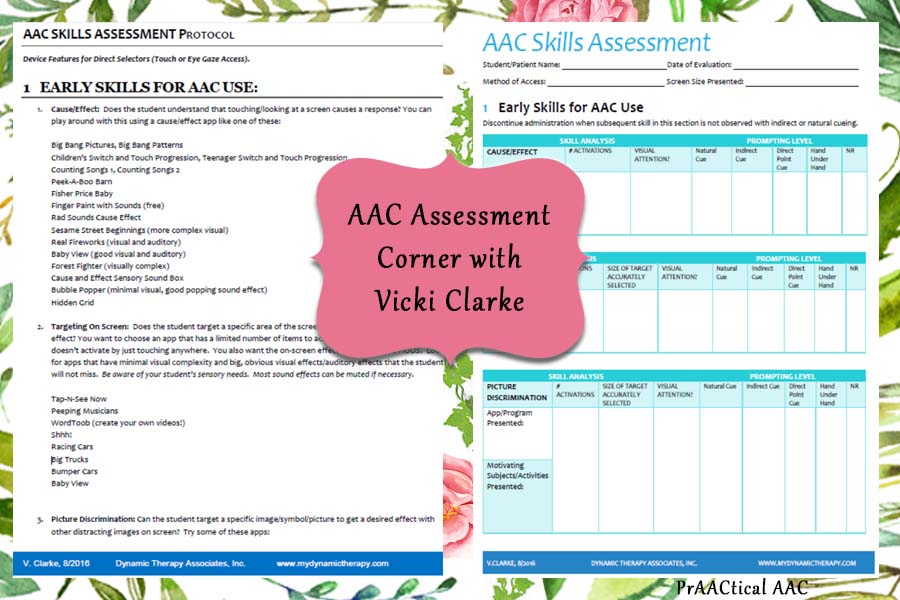
*The protocol and datasheets are specifically designed for direct selectors, students who are able to activate a screen by touching.

You can download the assessment protocol and data sheet here.
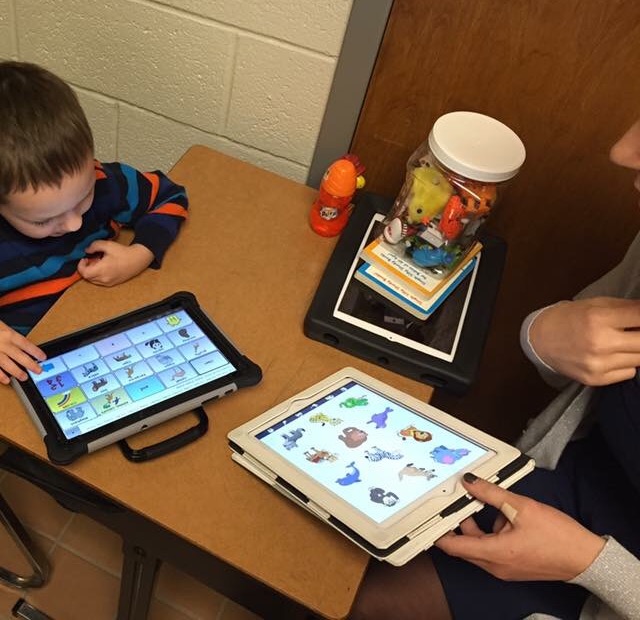
Filed under: Featured Posts, PrAACtical Thinking
Tagged With: access, assessment, assessment form, forms
This post was written by Carole Zangari



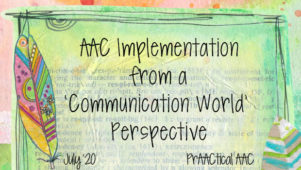

1 Comment
This is very helpful as a new to schools Slp i am looking for a justification to get the aac evaluation 1) do you have a general statement that you use? Two do you do trainings on how to do aac evals